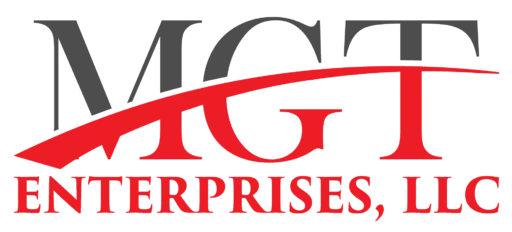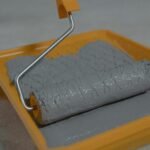Waste from construction can pile up fast, and so do the costs. If you are still using traditional methods, they lead to waste, extra labor, and excess budget. The main cause of this is inaccurate onsite measuring and cutting.
However, this can be solved through precision-cut metal framing, which is a fast and smarter way to boost efficiency, reduce waste, and keep your costs low.
What Is Precision-Cut Metal Framing?
This method uses pre-cut steel studs, which are made off-site with accurate measurements. You do not have to guess or waste anything because every part is ready to install. This is possible because of tools like CAD and BIM, which make everything fit perfectly, boost metal framing material efficiency and support real steel framing waste reduction on every project.
The Problem with Traditional Metal Framing Methods
Traditional framing, whether wood or steel, relies heavily on on-site measuring and cutting. While flexible, this method often leads to:
- Material overordering
- Offcuts and scrap
- Inconsistent stud lengths
- More job-site clean-up and disposal costs
For steel framing, in particular, on-site waste can be expensive. Steel is recyclable, but transporting and processing scrap comes at a cost. That’s where steel framing waste reduction through precision cutting becomes not just a nice-to-have, but a financial necessity.
How Precision Cutting Boosts Metal Framing Material Efficiency
So, how exactly does precision cutting improve metal framing material efficiency?
1. Exact Cuts Equal Less Waste
When metal studs and tracks are cut to precise lengths using digital layouts, every piece has a place. This eliminates excess cuts and mismatched components, leading to fewer scraps tossed aside.
2. Optimized Material Layout
Digital fabrication software can arrange stud and track cuts from longer steel lengths in the most efficient layout possible, maximizing every inch of raw material.
3. Better Inventory Management
Since materials are pre-measured and labeled, it’s easier to track what you have and what you need, reducing the chance of overordering.
4. Fewer Job-Site Mistakes
Field errors often lead to rework and wasted materials. Precision-cut systems minimize human error, supporting metal framing material efficiency through reduced need for do-overs.
5. Reduced On-Site Labor
Cutting and measuring on-site adds time and labor costs. Pre-cut components enable quicker installations as no extra measuring is needed, and they allow accurate assembly from the beginning.
Steel Framing Waste Reduction in Action
The use of precision steel framing minimizes waste, saving both materials and costs. This, in turn, improves the speed and efficiency of construction, in addition to being friendly to your budget.
In extensive projects, like hospitals or data centers, there is a six-figure saving on materials, which does not factor in the additional savings in disposal costs and the accelerated completion time.
This is the true outcome of steel framing waste reduction, building cleaner, building cheaper, and building greener.
Environmental Benefits of Precision Metal Framing
Construction waste accounts for a significant portion of landfill use in the U.S. By using precision-cut components, you’re not just saving money, you’re also reducing your environmental footprint.
Here’s how metal framing material efficiency contributes to greener construction:
- Less scrap equals less landfill
- Lower emissions from transport and disposal of waste
- Better alignment with LEED and green building standards
- Optimized steel usage helps reduce carbon impact of production
And since steel is one of the most recyclable materials in construction, using it more efficiently aligns perfectly with sustainability goals.
Integrating BIM for Even Greater Efficiency
Building Information Modeling (BIM) isn’t just for architects. When used alongside precision framing, BIM software allows contractors to visualize and plan framing down to the smallest detail.
BIM helps improve metal framing material efficiency by doing the following.
- Generating cut lists based on actual designs
- Preventing clashes with other trades (like HVAC or plumbing)
- Creating material schedules that avoid waste
- Allowing real-time updates for design changes
This level of coordination between design and build phases means fewer surprises and fewer mistakes, translating into measurable steel framing waste reduction across the entire project.
Common Use Cases for Precision-Cut Metal Framing
Precision-cut framing is being used in a growing number of project types, including:
- Multifamily housing units
- Commercial offices
- Schools and universities
- Hospitals and healthcare centers
- Retail centers and industrial builds
Wherever timelines are tight and budgets are critical, metal framing material efficiency delivers value.
Cost Savings Beyond Material
Yes, you’ll save on materials. But the real kicker is the combined benefit of reduced waste, faster builds, and fewer labor hours. Consider:
- Fewer cuts and rework equals faster build times
- Lighter loads of waste to haul off-site
- Reduced cleanup hours
- Improved site safety with fewer sharp off-cuts around
And when your project wraps up faster with fewer change orders and delays, the client notices. Efficiency isn’t just good for your bottom line, it’s great for your reputation.
Tips for Maximizing Metal Framing Material Efficiency
Want to make the most of your framing process? Follow these best practices.
- Start early with digital modeling– Incorporate precision cutting and BIM from day one.
- Work with a framing partner– Choose manufacturers who offer pre-cut systems and support.
- Train your crew– Help your team transition from traditional cutting methods to precision installs.
- Track performance– Monitor how much material is being used and wasted to spot inefficiencies.
- Document your savings– From job site to accounting, track cost and time saved to prove ROI.
Build Smarter, Not Harder
Precision-cut framing is more than a trend, it’s a better way to build. By embracing this method, you’re not just improving metal framing material efficiency; you’re making smarter, cleaner, and more cost-effective decisions across the board.
In an industry where margins are tight and sustainability is top-of-mind, steel framing waste reduction and material efficiency are no longer optional, they’re essential. Whether you’re building high-rise apartments or fitting out a new retail space, precision framing helps you reduce waste, cut costs, and deliver results that last.
Make every inch count. Switch to precision-cut framing and watch your efficiency soar.






